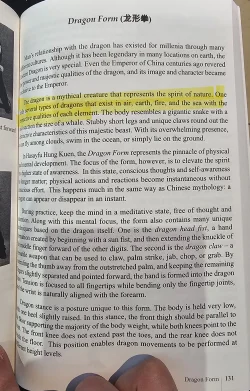I don’t feel these kinds of generalizations are accurate, or at best are only accurate in limited context. Your example of crane is a good place to start. The Tibetan crane method is very aggressive. When it fights, it takes the fight to the attacker and drives in until the job is done. Striking in Tibetan crane is very powerful and does not simply sweep away an attack, at least not without some seriously damaging follow-up. We make very little use of the “crane beak” strike with the fingers, preferring to use regular fists for the most part, although we strike with different parts of the fist. While a crane, like any animal, wants to be left alone and never simply looks for a fight, they can be quite aggressive when defending the nest and have been known to stand down water buffalo in Africa. That is one hell of an impressive accomplishment and paints a picture of an animal punching far above its weight class.
I know very little about Fujian crane, but what I’ve seen tells me it is different altogether from the Tibetan method. I have heard of an Omei crane, but the source I heard it from makes me uncertain if it is a real thing. It is possible that other methods have their own interpretation of the animal. One example is Hung Ga and its famous Fu/Hok Tiger/Crane form. Much of the crane material comes from the Tibetan method (that is historically documented), but there is stuff in there that I do not recognize. It is possible that it comes from the Fujian method, but it is also possible that it is Hung Ga’s own interpretation of the crane. I suspect that other methods that may have some crane material within them have probably made their own interpretation as well and did not adopt Tibetan of Fujian (or Omei) material. At any rate, these various interpretations of the same animal, created by different groups of people living in different parts of historical China, certainly do not comply with one unified interpretation of the behavioral/spiritual qualities of the bird that would dictate how the animal is translated into a fighting method for humans.
Your comment on Tiger is another good example. While the tiger is an extremely strong and powerful animal, I have never seen a viable martial method that suggests one should rely on raw physical strength. Such a method would be useful to a very limited group of athletic people and only for so long as they are youthful and able to keep up that strength. Strength is always useful, but every martial method I have experienced has stressed efficiency in movement and good technique to maximize effect while minimizing effort. That is the opposite of relying on raw physical strength and I suspect that any such approach would be viewed as extremely crude in China, among other more sophisticated methods.
My experience in Tibetan crane tells me that the animal was seen as a source of inspiration that could translate into meaningful and useful movement to maximize efficiency in a human martial method. It is not seen as something to copy or otherwise “become” the animal. Practice of an animal style should not be about mimicry or acting like the animal. I suspect that any such displays are a modern re-interpretation for theatrical performances and entertainment.

